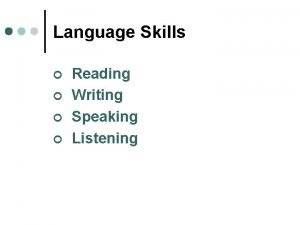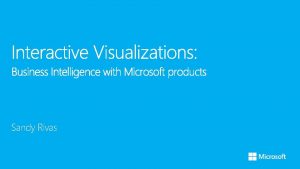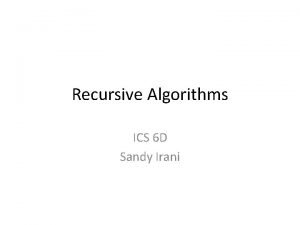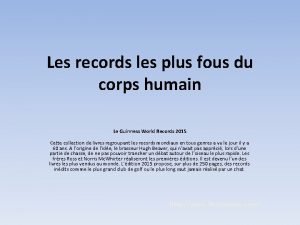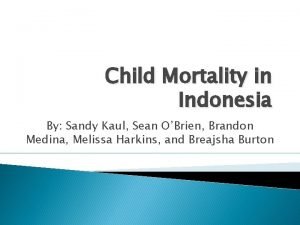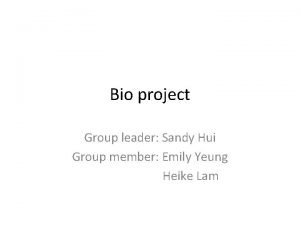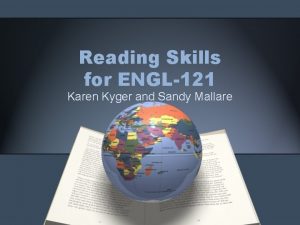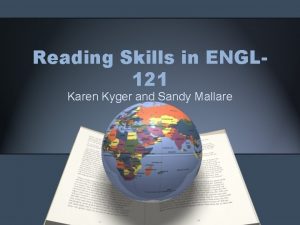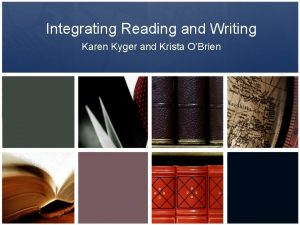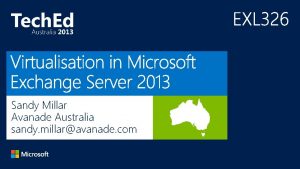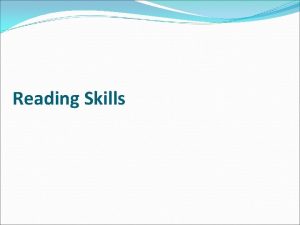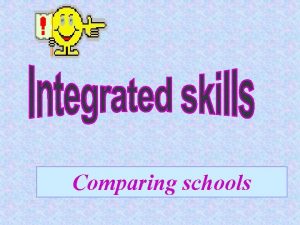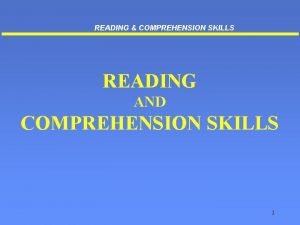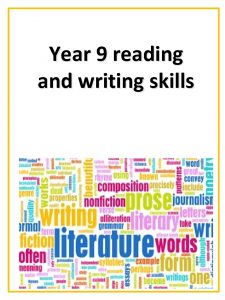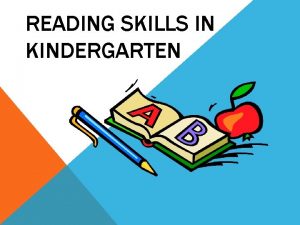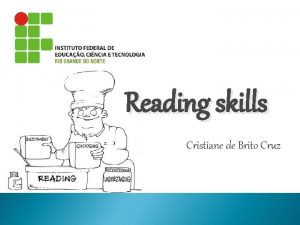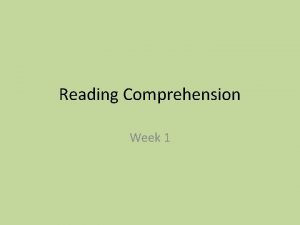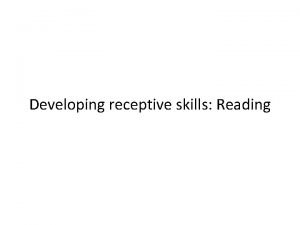Reading Skills for ENGL121 Karen Kyger and Sandy



















- Slides: 19

Reading Skills for ENGL-121 Karen Kyger and Sandy Mallare

T/F 1. Better readers tend to produce more mature writing than poorer readers.

T/F 2. Some state legislatures are mandating the integration of reading and writing at the developmental level.

T/F 3. Metacognition is when students are not aware of their own learning processes.

T/F 4. All assigned reading should be completed outside class.

T/F 5. One of the best ways to evaluate students’ understanding of a text is to have them summarize it.

Reading Skills in ENGL-121 Overview • Focus on Critical Thinking – Most Important • Encourage Metacognitive Conversations – Think Aloud – Text Talk – Metacognitive Logs • Embed mini-lessons on skills during discussions – – Active Reading/Learning Main Ideas Organizational Patterns Author’s Purpose

Metacognitive Conversation (Making Thinking Visible)

A question I have is… I got confused here. I’ll keep reading and check back. I got lost. I better reread this part What is a metacognitive conversation? Becoming aware of the thinking process while reading. So what it’s saying is….

Why is metacognition important? “Metacognitive knowledge has been shown to be a significant predictor of reading comprehension; however, students do not automatically develop useful metacognitive strategies with time or age (Baker, 2008). Pintrich (2002) noted that there is a “number of students who come to college having very little metacognitive knowledge; knowledge about different strategies, different cognitive tasks, and particularly, accurate knowledge about themselves” (p. 223). However, there is some compelling evidence that metacognition can be developed through instruction. ” (Holschuh, J. & Paulson, E (2013))

Metacognitive Dimension • • Introduce/Modeling Thinking Aloud Students Practice Thinking Aloud Talking to the Text (Annotating) Capturing the Reading Process (Keep Reading Strategies List in Canvas for Teacher/Students to update • Metacognitive Bookmark • Metacognitive Reading Log Author’s important ideas/My thoughts, feelings Evidence/Interpretation • Log/Pair Work (Schoenbach, R, Greenleaf, C. , and Murphy, L. )

Grading Metacognitive Thinking? ? ? • Metacognitive Logs Rubric (Schoenbach, R, Greenleaf, C. , and Murphy, L. )

Using Mini-lessons INTEGRATING READING SKILLS IN THE CLASSROOM

How To Present a Reading Mini-Lesson to Students Introduce the strategy: Establish its relevance, use and importance. Explain procedures: Describe how the technique works; explain steps in the process. Demonstrate: Using sample materials show the technique is done. Apply: Guide students in applying the technique. Evaluate: Reflective on the usefulness of the technique and discuss modifications for different learning situations.

Cognitive Dimension (Questioning, Clarifying, Summarizing)

Cognitive Dimension – Assembling a Reading Toolbox • • • Chunking Clarification Chart Questioning – (Student created – Re. Quest, QAR ) This is About/This is Really About (Main Ideas) Summaries – 25 Word Abstract Reciprocal Teaching Role Cards (Facilitators – Clarification, Question, Summarization) (Schoenbach, R, Greenleaf, C. , and Murphy, L. )

This is About/This is Really About Students work in groups to identify main ideas and use them to create a summary 1. Students read a passage and be ready to “tell what the passage is about. ” 2. Record all student ideas on a list. 3. Have class distinguish main ideas and details 4. Have students individually decide which ideas capture main idea 5. Keep asking, “This is about that, but what is it really about? ” (Schoenbach, R, Greenleaf, C. , and Murphy, L. )

Twenty-Five Word Abstract Limiting students to 25 word summaries helps them really focus on what’s important. 1. Students individually read and highlight main ideas and difficult vocabulary. 2. Working in small groups, students share their main ideas and reasons for selecting them. 3. Ask groups to reach consensus about main points 4. Students individually write an abstract of 25 words or less to include key points 5. Students share abstracts with group and then write group abstract (Schoenbach, R, Greenleaf, C. , and Murphy, L. )

References • Holschuh, Jodi P. , and Eric J. Paulson. "The Terrain of College Developmental Reading. " Executive Summary and Paper Commissioned by the College Reading & Learning Association (2013): July 2013. Web. • Schoenbach, Ruth, Cynthia Greenleaf, and Lynn Murphy. Reading for Understanding: How Reading Apprenticeship Improves Disciplinary Learning in Secondary and College Classrooms. San Francisco: Jossey-Bass, 2013. Print.
 Pre reading while reading and post reading activities
Pre reading while reading and post reading activities Sandy feels dirty unless she bathes and changes
Sandy feels dirty unless she bathes and changes Intrapersonal vs interpersonal communication
Intrapersonal vs interpersonal communication What is hard skills and soft skills
What is hard skills and soft skills Receptive skills listening and reading
Receptive skills listening and reading Slide todoc.com
Slide todoc.com What are the aims of teaching reading?
What are the aims of teaching reading? Types of reading skills
Types of reading skills Intensive reading and extensive reading
Intensive reading and extensive reading What is intensive reading
What is intensive reading Intensive reading and extensive reading
Intensive reading and extensive reading Andy sometimes comics. (to read)
Andy sometimes comics. (to read) Sandy tatiana rivas
Sandy tatiana rivas Sandy miller real estate
Sandy miller real estate Sandy irani
Sandy irani Sandy beach
Sandy beach Sumito matsumura
Sumito matsumura Characteristics of sandy soil
Characteristics of sandy soil Sandy kaul
Sandy kaul Sandy hui
Sandy hui





